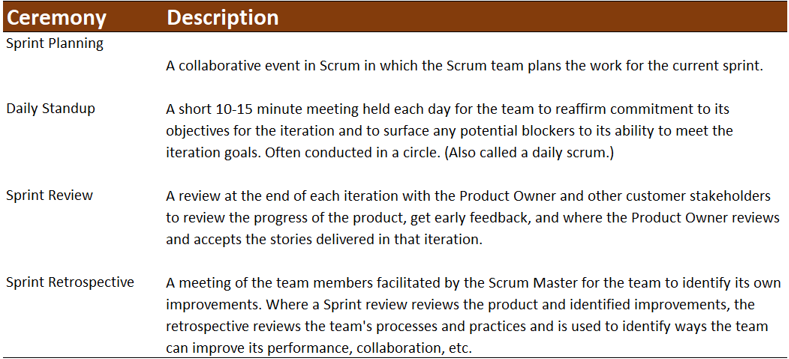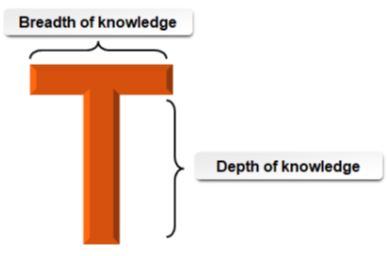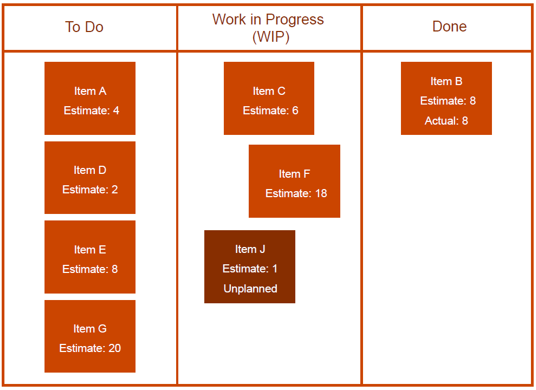Build shared understanding about a project
Enablers
- Survey all parties to reach consensus. (ECO 1.10.2)
- Support outcome of parties' agreement. (ECO 1.10.3)
Deliverables, and Tools

Vision
A vision is a desired end-state, often described as a set of desired objectives and outcomes.
At the start of a project, a clear vision of the desired end objectives is critical.
The definition of the deliverables influences the project approach-traditional waterfall or agile approach.
Vision statement might include:
- Product or solution description
- Intended users or consumers of the solution
- Key desired objectives
- Differentiators from competitive approaches
- Key features and benefits
Project Charter
A project charter * is a document issued by the project initiator or sponsor that formally authorizes the existence of a project and provides the project manager with the authority to apply organizational resources to project activities.
- Purpose
- Measurable project objectives and related success criteria
- High-level requirements
- High-level project description, boundaries, and key deliverables
- Overall project risk
- Summary milestone schedules
- Pre-approved financial resources
- Key stakeholders list
- Project approval requirements
- Project exit criteria
- Assigned project manager and responsibility/ authority level
- Name and authority of the project sponsor
Project Overview Statement
- Communicates enterprise-wise the intent and the vision of the project.
- Brevity and clarity are key.
- Captures the project’s objective, problem or opportunity, and criteria for success.
- With authorization via the project charter or approved project overview statement, the project manager begins the activities of project planning.
NOTE: PMI provides access to over 1,000 templates at
http://www.pmi.org/learning/tools-templates
Agile Ceremonies
Scrum*: An agile framework for developing and sustaining complex products, with specific roles, events, and artifacts.
Scrum Master* is the coach of the development team and process owner in the Scrum framework.
Sprint*: A timeboxed iteration in Scrum.

Kickoff Meeting
Purpose:
- Establish project context
- Assist in team formation
- Ensure proper alignment to the overall project vision
Activities during kickoff may include:
- Defining a vision statement
- Defining a team charter
- Assisting the customer/Product Owner with:
- User story writing
- Estimation of effort
- Prioritization planning
- Initial product backlog
Initial startup activities is often Sprint 0.
These may include team onboarding, credentialing, establishing environments and supporting communications tools, and a number of other activities that ensure the teams are in place and ready to work on iteration objectives.
T-Shaped Skills
Agile teams invest in becoming more cross-functional.
By leveraging all team members to help accomplish the team goals:
- Improves team’s efficiency
- More likely to achieve objective
- Avoid single-points-of failure

Iteration Planning
Iteration planning is a collaborative agile ceremony, sometimes called Sprint planning, for the team and the customer representative (or Product Owner) to do the following:
- Review the highest prioritized user stories, or key outcomes
- Ask questions
- Come to agreement on which stories the team forecasts it will complete in the iteration
After agreement, the team determines which activities are required to deliver the iteration objectives.
Task Boards
Visualizes the work and enable the team and other stakeholders to track their progress as work is performed during the iteration.
Promote visibility and limit the amount of work in progress (WIP).
Examples of task boards include Kanban boards, to-do lists, procedure checklists, and Scrum boards.

Consensus
Consensus: A decision-making process used by a group to reach a decision that everyone can support.
- Fist of Five Technique: Individuals vote by holding up five fingers for total agreement, a fist for total disagreement, or multiple fingers for somewhere in between.
- Roman Voting: Individuals vote with either a thumbs up (agreement) or thumbs down (disagreement).
- Polling: Team members share their point of view and if the team is unanimous, then they move on. If objections are raised, the facilitator works to solve the problem.
- Dot Voting: Individuals use sticky dots to prioritize items in a list.
Estimation Techniques

XP Metaphor
- Metaphor is an Extreme Programming (XP) technique that describes a common vision of how a program works.
- Metaphors should be simple and non-technical.
- Enables understand of the overarching approach that is being taken to provide a capability or solve a problem.
Product Box Exercise
Technique used to explain an overarching solution.
Stakeholders try to describe aspects of a solution in the same way a marketer might describe product features and benefits on a box.
Helps with understanding:
Different types of users of a solution
Their priorities and likes/dislikes
Key aspects of a solution that drive the most critical value aspects
Brainstorming
Brainstorming is a simple technique used to generate a list of ideas.
Led by a facilitator and the group tends to be a group of stakeholders, team members, or subject matter experts.
After quickly generating a list of alternatives, the group performs analysis of the alternatives and generally chooses a particular one for action
Guidelines to Reach Consensus and Support the Outcome of the Parties’ Agreement
- Having a team charter is enormously helpful here as it may specify how a team chooses to handle certain scenarios and disagreements when they arise. For example, where team members disagree about the number of story points to estimate for a particular user story, the team charter may designate that the team will use the higher estimate, or that majority vote rules.
- In general, it is preferable to seek consensus among the team where possible, and to recognize that sometimes it will not be possible.
- For those times when consensus is not possible, it is helpful to have an agreed approach in advance.